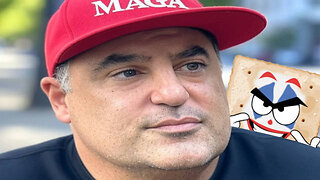Premium Only Content

Joaquin Rodrigo - Concierto de Aranjuez - "Adagio", 2nd Movement in B Minor.
This video was made using MAGIX Movie Edit Pro MX Plus.
The Concierto de Aranjuez is a concerto for classical guitar by the Spanish composer Joaquín Rodrigo. Written in 1939, it is by far Rodrigo's best-known work, and its success established his reputation as one of the most significant Spanish composers of the 20th century.
Inspiration and history
Royal Palace of Aranjuez
The Concierto de Aranjuez was inspired by the gardens at the Royal Palace of Aranjuez, the spring resort palace and gardens built by Philip II in the last half of the 16th century and rebuilt in the middle of the 18th century by Ferdinand VI. The work attempts to transport the listener to another place and time through the evocation of the sounds of nature.
According to the composer, the first movement is "animated by a rhythmic spirit and vigour without either of the two themes... interrupting its relentless pace"; the second movement "represents a dialogue between classical guitar and solo instruments (cor anglais, bassoon, oboe, horn etc.)"; and the last movement "recalls a courtly dance in which the combination of double and triple time maintains a taut tempo right to the closing bar." He described the concerto itself as capturing "the fragrance of magnolias, the singing of birds, and the gushing of fountains" in the gardens of Aranjuez.
Rodrigo and his wife Victoria stayed silent for many years about the inspiration for the second movement, and thus the popular belief grew that it was inspired by the bombing of Guernica in 1937. In her autobiography, Victoria eventually declared that it was both an evocation of the happy days of their honeymoon and a response to Rodrigo's devastation at the miscarriage of their first pregnancy. It was composed in 1939 in Paris.
Rodrigo dedicated the Concierto de Aranjuez to Regino Sainz de la Maza.
Rodrigo, nearly blind since age three, was a pianist. He did not play the guitar, yet he still managed to capture and project the role of the guitar in Spanish music.
The premiere of the Concierto de Aranjuez was held on 9 November 1940 at the Palau de la Música Catalana, in Barcelona. It was performed by guitarist Regino Sainz de la Maza with the Orquesta Filarmónica de Barcelona conducted by César Mendoza Lasalle.
On 11 December 1940, the concerto received its first performance in Madrid, at the Teatro Español de Madrid conducted by Jesús Arámbarri, with the same soloist. The United States premiere was given by Rey de la Torre on 19 November 1959, with the Cleveland Orchestra conducted by Robert Shaw.
Structure
This concerto is in three movements, Allegro con spirito, Adagio and Allegro gentile. The first and last movements are in D major, while the famous middle movement is in B minor. Along with the solo guitar, it is scored for an orchestra consisting of two flutes (one doubling on piccolo), two oboes (one doubling on cor anglais), two clarinets in B♭, two bassoons, two horns in F, two trumpets in C, and strings.
First movement
The first movement's 40-measure introduction begins with the solo guitar strumming a three-measure theme in 6/8. The theme is made of tonic, supertonic, and dominant chords and features a flamenco-like hemiola rhythm. As it repeats several times, the tonic chord's uppermost note gets higher, starting with the third, then using the fifth, the tonic, and the fifth again.
Second movement - Adagio - Featured in this video.
The second movement in B minor, the best-known of the three, is marked by its slow pace and quiet melody, introduced by the cor anglais, with a soft accompaniment by the guitar and strings. A feeling of quiet regret permeates the piece. Ornamentation is added gradually to the melody in the beginning. An off-tonic trill in the guitar creates the first seeds of tension in the piece; they grow and take hold, but relax back to the melody periodically. Eventually, a climactic build-up starts. This breaks back into the main melody, molto appassionato, voiced by the strings with accompaniment from the woodwinds. The piece finally resolves to a calm arpeggio from the guitar, though it is the strings in the background rather than the guitar's final note that resolve the piece.
Third movement
The third movement is in mixed metre, alternating between 2/4 and 3/4. At the beginning of the movement, four-measure phrases containing 9 beats in total are formed from one 3/4 measure followed by three 2/4 measures. As the movement progresses, the metre becomes more irregular. It begins with the guitar starting the theme in the "wrong" key of B major, but the orchestra restates it in the home key of D major.
For more information on the Concierto de Aranjuez, please go to: https://en.wikipedia.org/wiki/Concierto_de_Aranjuez
-
 2:08:48
2:08:48
TheSaltyCracker
11 hours agoLefty Grifters Go MAGA ReeEEeE Stream 12-22-24
194K621 -
 1:15:40
1:15:40
Man in America
14 hours agoThe DISTURBING Truth: How Seed Oils, the Vatican, and Procter & Gamble Are Connected w/ Dan Lyons
115K111 -
 6:46:07
6:46:07
Rance's Gaming Corner
16 hours agoTime for some RUMBLE FPS!! Get in here.. w/Fragniac
157K2 -
 1:30:48
1:30:48
Josh Pate's College Football Show
15 hours ago $10.21 earnedCFP Reaction Special | Early Quarterfinal Thoughts | Transfer Portal Intel | Fixing The Playoff
90K1 -
 23:55
23:55
CartierFamily
3 days agoElon & Vivek TRIGGER Congress as DOGE SHUTS DOWN Government
130K152 -
 5:43:44
5:43:44
Scammer Payback
2 days agoCalling Scammers Live
223K30 -
 18:38
18:38
VSiNLive
2 days agoProfessional Gambler Steve Fezzik LOVES this UNDERVALUED Point Spread!
160K20 -
 LIVE
LIVE
Right Side Broadcasting Network
10 days agoLIVE REPLAY: President Donald J. Trump Keynotes TPUSA’s AmFest 2024 Conference - 12/22/24
2,900 watching -
 4:31
4:31
CoachTY
1 day ago $28.78 earnedCOINBASE AND DESCI !!!!
196K13 -
 10:02
10:02
MichaelBisping
1 day agoBISPING: "Was FURY ROBBED?!" | Oleksandr Usyk vs Tyson Fury 2 INSTANT REACTION
116K16